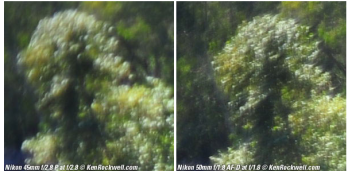Well I acknowledged that Topcon was the first 300mm f/2.8 and of course I referenced the Nikkor H 300 as seen in Nikon own story at
https://imaging.nikon.com/history/story/0011/index.htm
Ha the real reason Canon brought out their 300mm f/2.8 Fluorite in 1974 is that when they got shown up at the 1972 Sapporo Winter Games they started to grow the Fluorite crystals and it took a year to make the 'glass' big enough. I jest, but the truth was probably pretty close; while yes Fluorite is a great material for reducing CA the thermal expansion issues especially with the 300/2.8 with the black barrel caused a 'loss of sharpness' kinda what you don't want in telephoto. In addition I've heard (but not directly confirmed) that those early Fluorite glass lenses can crack with strong heat/cold cycles, come in at half time to a cold press room and the fast change could crack the large elements at the edges, again not a great thing for working pros. I think this is why the early black barrel Canon Fluorite tele's are relatively rare to be found these days.
I wouldn't say that Canon was ahead by any means in the telephoto range in the mid to late 1970's. Canon did have the 800mm f/5.6L, a non-L level 600mm f/4.5 (a dog by some accounts and unverified by me) a decent 400mm f/4.5 (no Internal Focussing) and that black 300mm 2.8. In the same era to 1980 Nikon would have the ED-IF range of 200/2, 300/3.8, 400/3.5, 600/5.6, the near legendary 600/4 (one I debated about inclusion to my list) with the soon to be telephoto standard accessory of the TC-14, the 800/8 and a 1200/11. Granted, in the 1980's Canon would counter with the FD set of stellar white lenses of the 300mm f/2.8L, 400mm 2.8L (which could be considered a more useful response to the Nikkor 300mm f/2+TC14c) and the inside secret of the 500mm f/4.5L (which would motivate Nikon to design their own stellar response in the 500mm f/4P). At this point of the manual focus era it could be considered that Nikon and Canon would be equal, save only for a 600mm f/4 that Canon would save for the EOS design change. So to be clear, Nikon was clearly ahead by the 80's but Canon would soon pull even and most would argue pull ahead in the early AF era with in lens AF motors, but I'll save that ramble for another cup of coffee.











